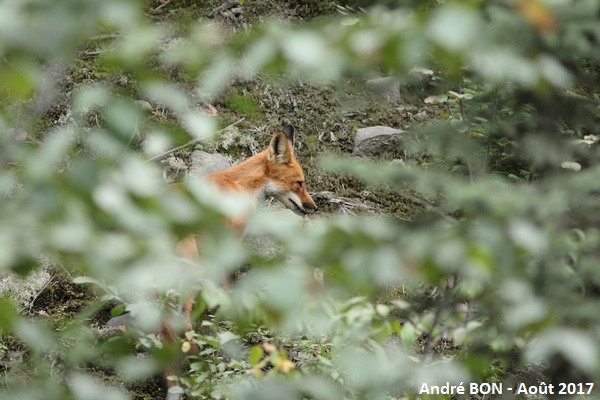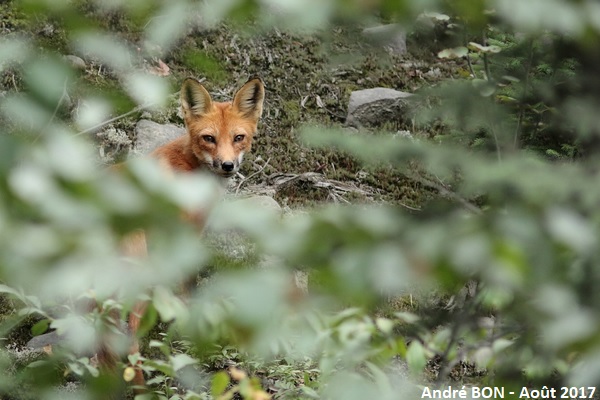

| Red Fox (Vulpes vulpes (Linnaeus, 1758)) |


|
|
Scientific name: Vulpes vulpes (Linnaeus, 1758) Common name: Red Fox French name: Renard roux Family: Canidae Size: Length: 58-90 cm to which must be added 30-50 cm of tail; Weight: 3 to 11 kg. Biotope: Very varied habitats, plains, forests, even urban areas. Food: Though it is classified as a carnivore, the Red Fox is an opportunistic omnivore. It feeds mainly on small rodents and small birds and can supplement its diet with reptiles, insects, earthworms, carrion, fruits, etc. Longevity : Two to five years in the wild, up to fifteen years in captivity. Geographic area: Europe, North Africa, Asia, North America. Introduced to Australia. |
The Red Fox, as its name suggests, has a red fur but which can vary to very dark brown depending on the subspecies. Throat and belly are white. The muzzle is pointed. The tail is long and bushy. It ends with a small tuft of white hairs. The Red Fox breeds from December to February. The birth takes place in a burrow between March and May. There are usually four to six young per litter. |
| [To know more about the Red Fox] [Next picture] [Top] |

|
We saw this Red Fox on the edge of the forest track that leads to the Pourvoirie Némiskau. It walked a step back in the forest, curious to see a vehicle that stops, unlike those of fishermen eager to tease trout or large trucks loaded with wood. |
| [To know more about the Red Fox] [Previous picture] [Top] |

|
I finally shot my first pictures of Red Fox quite far from home while I see them from time to time in my native Burgundy. I will have to make some lookouts to observe them other than at random during a jogging. |